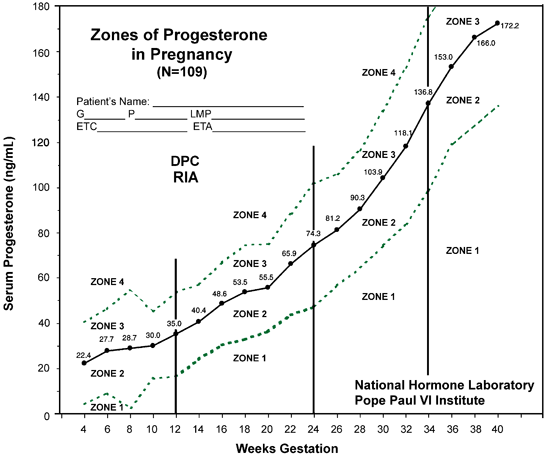
Progesterone Levels in Pregnancy: A Comprehensive Guide
Introduction
Progesterone is a crucial hormone that plays a pivotal role in maintaining a healthy pregnancy. Produced primarily by the corpus luteum during the early stages of pregnancy and later by the placenta, progesterone levels undergo significant changes throughout the gestation period. Understanding these fluctuations is essential for monitoring pregnancy progress and detecting potential complications.
Physiological Role of Progesterone in Pregnancy
Progesterone exerts a wide range of physiological effects that support pregnancy, including:
- Maintenance of the Uterine Lining: Progesterone prepares the endometrium for implantation and prevents uterine contractions, creating a favorable environment for embryo development.
- Cervical Closure: Progesterone thickens and softens the cervical mucus, forming a protective plug that prevents premature dilation and infection.
- Relaxation of Smooth Muscles: Progesterone relaxes the smooth muscles of the uterus and other pelvic structures, reducing the risk of premature labor.
- Immune Modulation: Progesterone suppresses the maternal immune response, preventing rejection of the developing fetus.
- Breast Development: Progesterone stimulates the growth and development of the breasts, preparing them for lactation.
Progesterone Levels During Pregnancy
Progesterone levels rise steadily during the first trimester, reaching their peak in the second trimester and remaining elevated until the onset of labor. The typical range of progesterone levels during pregnancy is as follows:
- First Trimester: 10-40 ng/mL
- Second Trimester: 25-80 ng/mL
- Third Trimester: 60-150 ng/mL
Monitoring Progesterone Levels
Progesterone levels are typically measured through blood tests. Serial monitoring may be recommended in certain situations, such as:
- Early Pregnancy: To confirm pregnancy and assess the risk of miscarriage.
- High-Risk Pregnancies: To monitor for conditions such as preterm labor or placental insufficiency.
- Assisted Reproductive Technologies (ART): To support embryo implantation and maintain pregnancy.
Clinical Significance of Abnormal Progesterone Levels
Low Progesterone Levels:
- First Trimester: Increased risk of miscarriage, ectopic pregnancy, and abnormal fetal development.
- Second Trimester: May indicate placental insufficiency, preterm labor, or fetal growth restriction.
- Third Trimester: Can lead to premature labor or placental abruption.
High Progesterone Levels:
- First Trimester: May be associated with molar pregnancy or multiple pregnancies.
- Second Trimester: Rare, but can indicate a luteal cyst or certain medical conditions.
- Third Trimester: Usually normal, but may be elevated in cases of placental overgrowth.
Factors Affecting Progesterone Levels
Several factors can influence progesterone levels during pregnancy, including:
- Placental Function: The placenta is the primary source of progesterone production after the first trimester. Placental insufficiency or abnormalities can lead to decreased progesterone levels.
- Maternal Age: Progesterone levels tend to be lower in older women, increasing the risk of pregnancy complications.
- Multiple Pregnancies: Carrying multiple fetuses can result in higher progesterone levels due to increased placental production.
- Medical Conditions: Certain medical conditions, such as diabetes or thyroid disorders, can affect progesterone levels.
- Medications: Some medications, including birth control pills and certain fertility drugs, can interfere with progesterone production.
Treatment of Abnormal Progesterone Levels
Treatment for abnormal progesterone levels depends on the underlying cause and the stage of pregnancy. Options may include:
- Progesterone Supplementation: Synthetic progesterone can be administered to increase levels in cases of deficiency.
- Placental Support: Measures to improve placental function, such as bed rest or medication, may be necessary.
- Cervical Cerclage: In cases of cervical insufficiency, a surgical procedure to tighten the cervix may be performed.
Conclusion
Progesterone levels are a crucial indicator of pregnancy health. Understanding the physiological role of progesterone and monitoring its levels throughout pregnancy allows healthcare providers to identify and manage potential complications. By maintaining optimal progesterone levels, we can improve pregnancy outcomes and ensure the well-being of both the mother and the developing fetus.